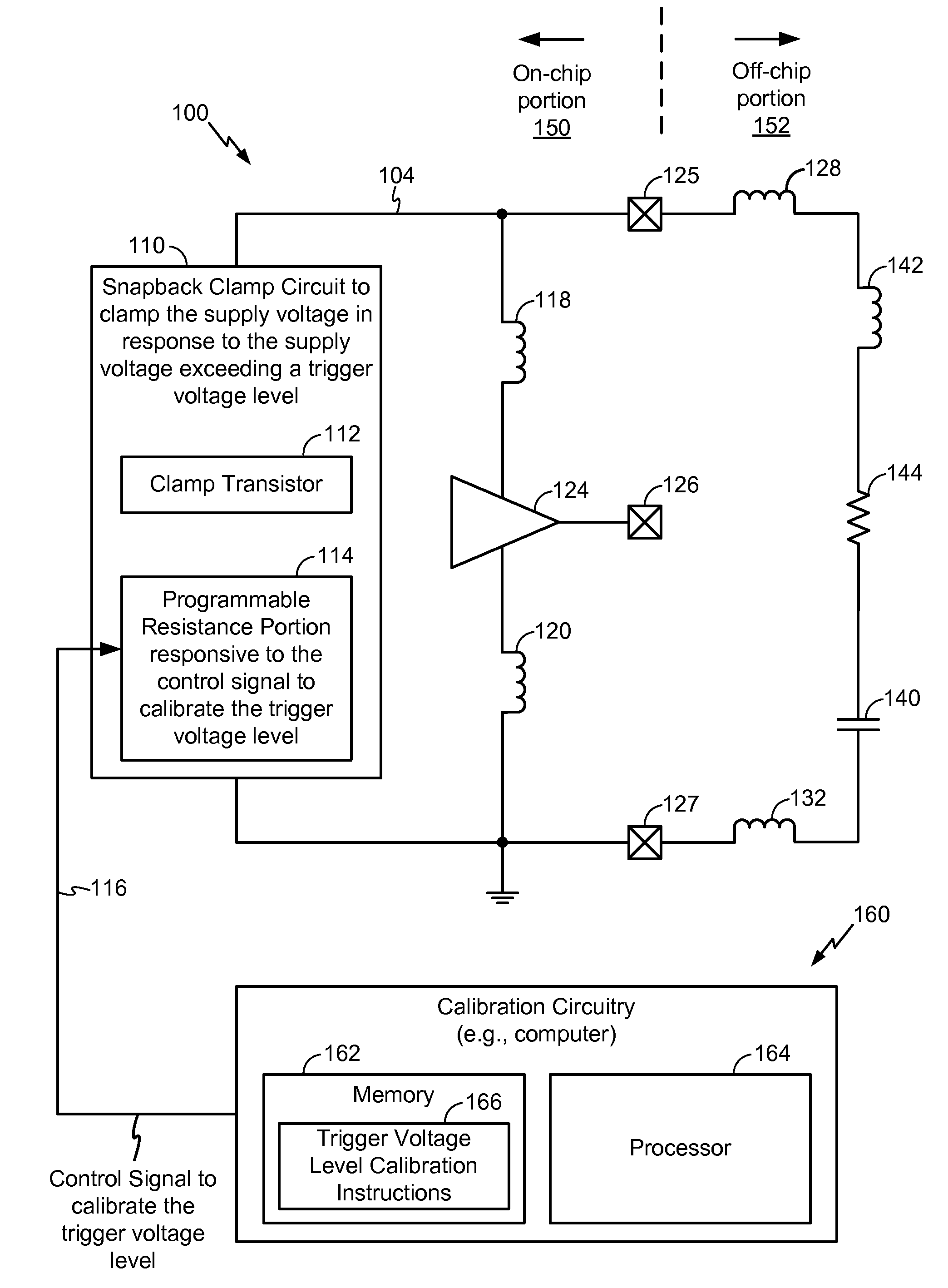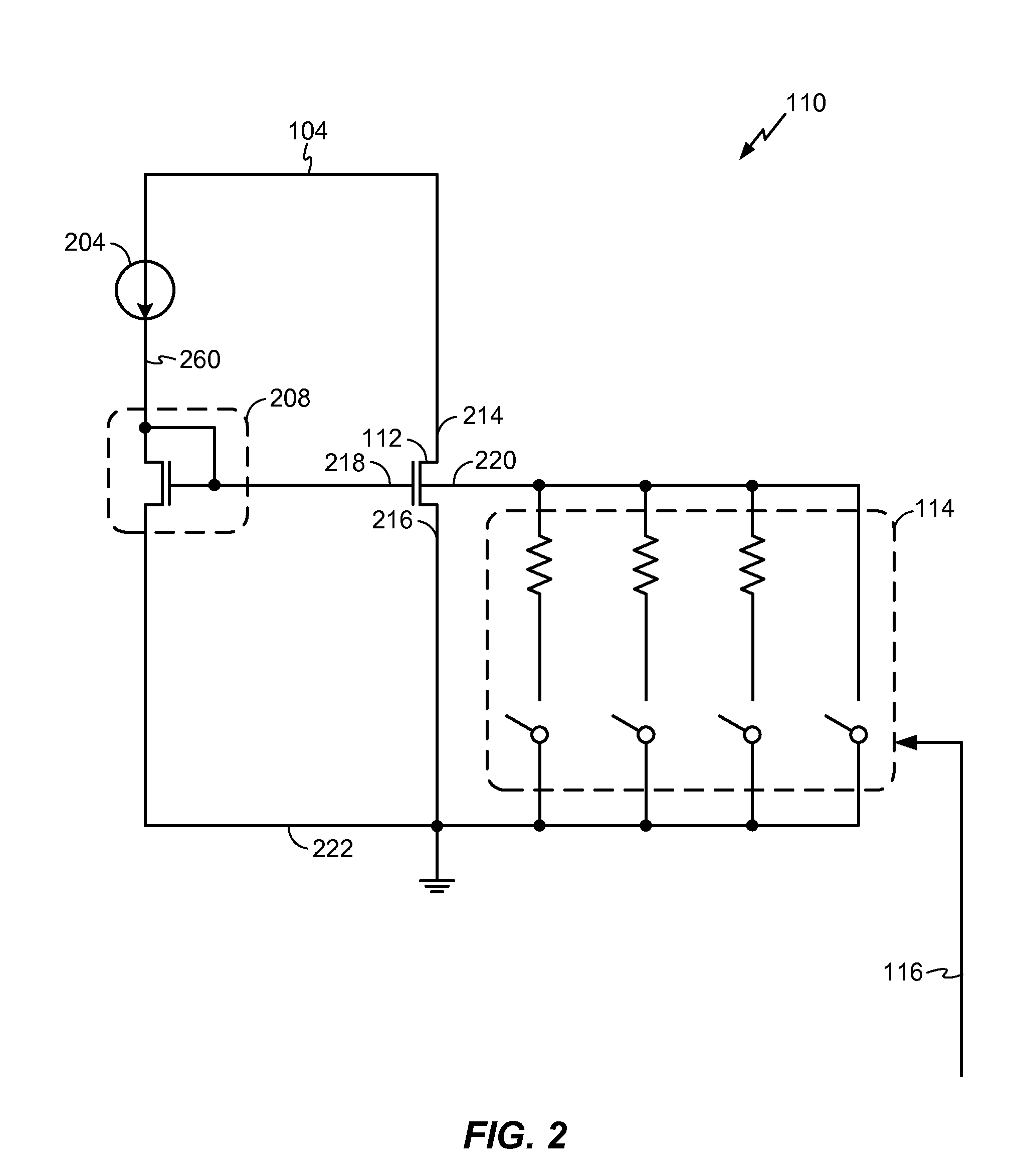Devices and methods for calibrating and operating a snapback clamp circuit
a technology of snapback clamping and devices, applied in the field of electronic devices, can solve the problems of damage to electronic devices that utilize integrated circuits damage to electronic devices that damage them, etc., and achieve the effect of discharging curren
- Summary
- Abstract
- Description
- Claims
- Application Information
AI Technical Summary
Benefits of technology
Problems solved by technology
Method used
Image
Examples
Embodiment Construction
[0025]FIG. 1 depicts a particular illustrative embodiment of a system that includes a device 100 and calibration circuitry 160 (e.g., a computer). The calibration circuitry 160 includes a memory 162 (e.g., a computer-readable memory) coupled to a processor 164. The memory 162 may store trigger voltage level calibration instructions 166 executable by the processor 164 to generate a control signal 116, as explained further below. As used herein, a memory, such as the memory 162, may include a random access memory (RAM), flash memory, read-only memory (ROM), programmable read-only memory (PROM), erasable programmable read-only memory (EPROM), electrically erasable programmable read-only memory (EEPROM), registers, hard disk, a removable disk, or any other form of non-transitory storage medium.
[0026]The device 100 may include an on-chip portion 150 (e.g., an integrated circuit) and an off-chip portion 152 (e.g., power supply circuitry associated with the device 100). The on-chip portion...
PUM
 Login to View More
Login to View More Abstract
Description
Claims
Application Information
 Login to View More
Login to View More - R&D
- Intellectual Property
- Life Sciences
- Materials
- Tech Scout
- Unparalleled Data Quality
- Higher Quality Content
- 60% Fewer Hallucinations
Browse by: Latest US Patents, China's latest patents, Technical Efficacy Thesaurus, Application Domain, Technology Topic, Popular Technical Reports.
© 2025 PatSnap. All rights reserved.Legal|Privacy policy|Modern Slavery Act Transparency Statement|Sitemap|About US| Contact US: help@patsnap.com



